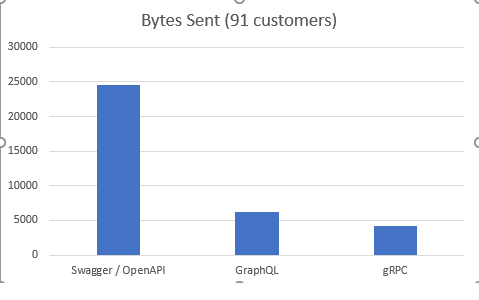This project is meant to enable exploration and comparison between different API technologies within ASP.NET Core:
This project references a localhost instance of Postgres containing the Northwind database.
If you have Docker desktop installed, the repo below has some instructions on getting the database set up. https://github.com/dahlsailrunner/northwind_psql
docker-compose -f .\docker-compose-windows.yml up
N O T E : You'll need to have a Docker compose file that exposes port 5432 like the one above does. Using that compose file should work fine. If you don't want to create the external volume, then modify the existing docker-compose.yml file and add the section for ports like the file above does.
Then simply run:
docker-compose up
Clone the repo and build it, then run.
It should open a browser to the Home page, with links across the top for the Swagger interface, the GraphQL playground, and the proto file for a Customer service.
NOTE: You need to run "NorthwindApiSampler" (not IISExpress) if you want the gRPC stuff to work.
Here's a screenshot of the home page you should see:

Uses Dapper, plus some very helpful information posted by Andrew Lock: https://andrewlock.net/using-snake-case-column-names-with-dapper-and-postgresql/
This folder contains simple POCOs that represent the objects that are in the Northwind database. Note the C# style naming of these; the Postgres database has different names and the logic for making the translactions is all in the Repositories folder and the Dapper line in Startup.cs that adds the underscore-handling.
This folder has the majority of the GraphQL-specific files / classes.
The Protos folder has gRPC protobuf files that are also exposed as static files when
the website is running to enable referencing them for new clients.
The Services folder has the implementation of the gRPC services.
There are two console apps in the solution that can be run as long as the Api is running. They are GraphQL and gRPC clients that call the endpoints.
Serilog is used for the logging, and when this project is run using Kestrel (and not IIS Express) it will show log entries in the console and a file that include the size of the DATA being sent in a response. This is useful to inspect the size of the payloads being put on the wire.
The OpenAPI "Customers" endpoint includes all fields for the Customer object. The OpenAPI datapoint shows the amount of data put on the wire for a "Get all" request.
The GraphQL endpoint exposes all fields as well, but only three are requested, and the datapoint shows the amount of data on the wire for that request.
The gRPC service has been defined to only include the three desired fields and the data is shown there also.
All three requests return data for 91 customers.
